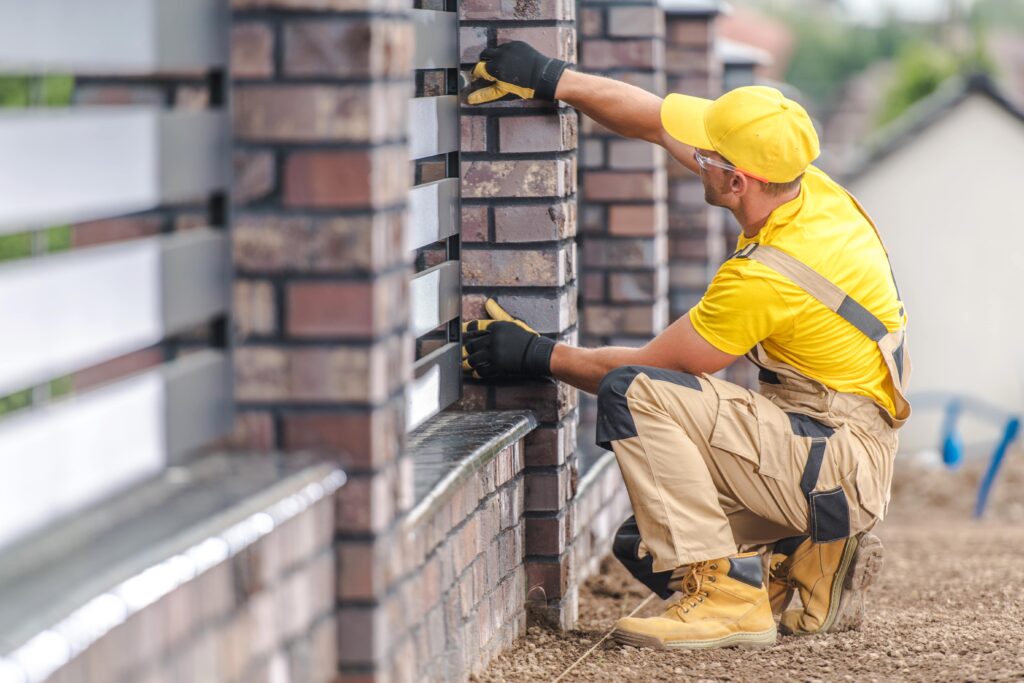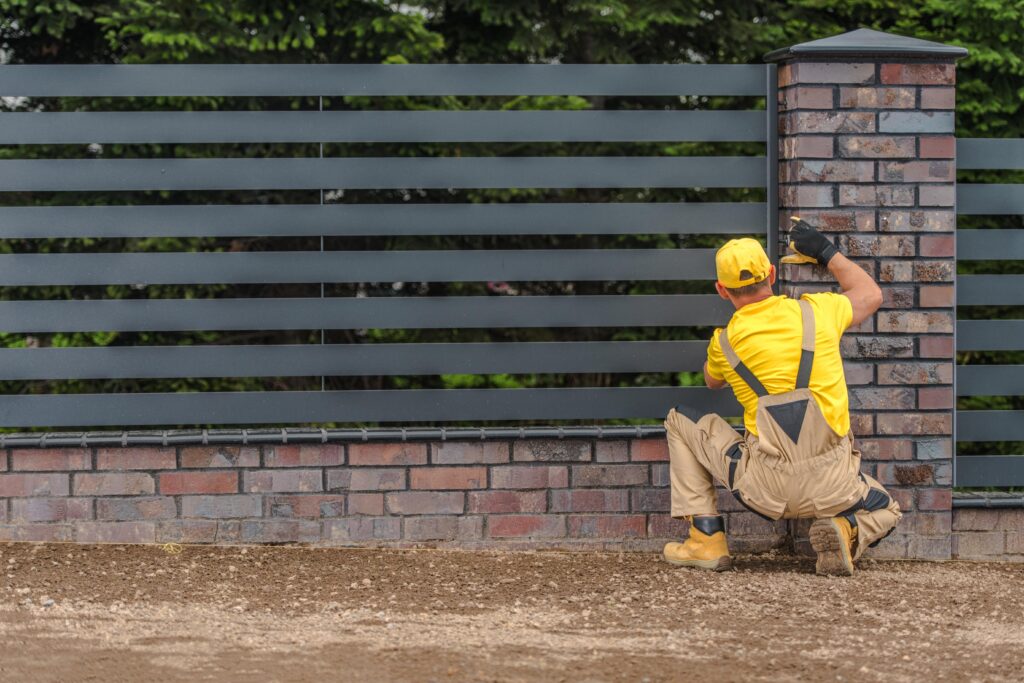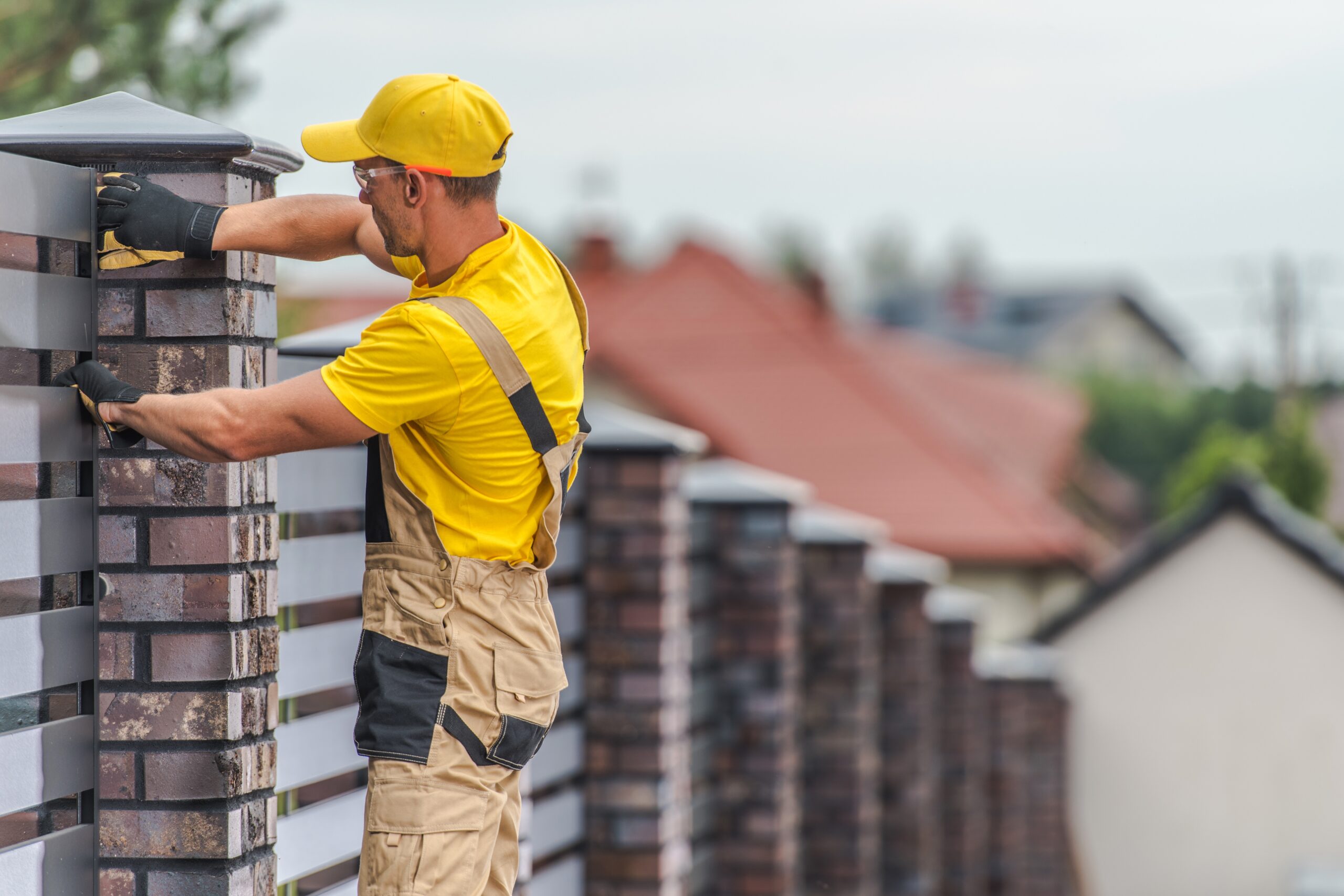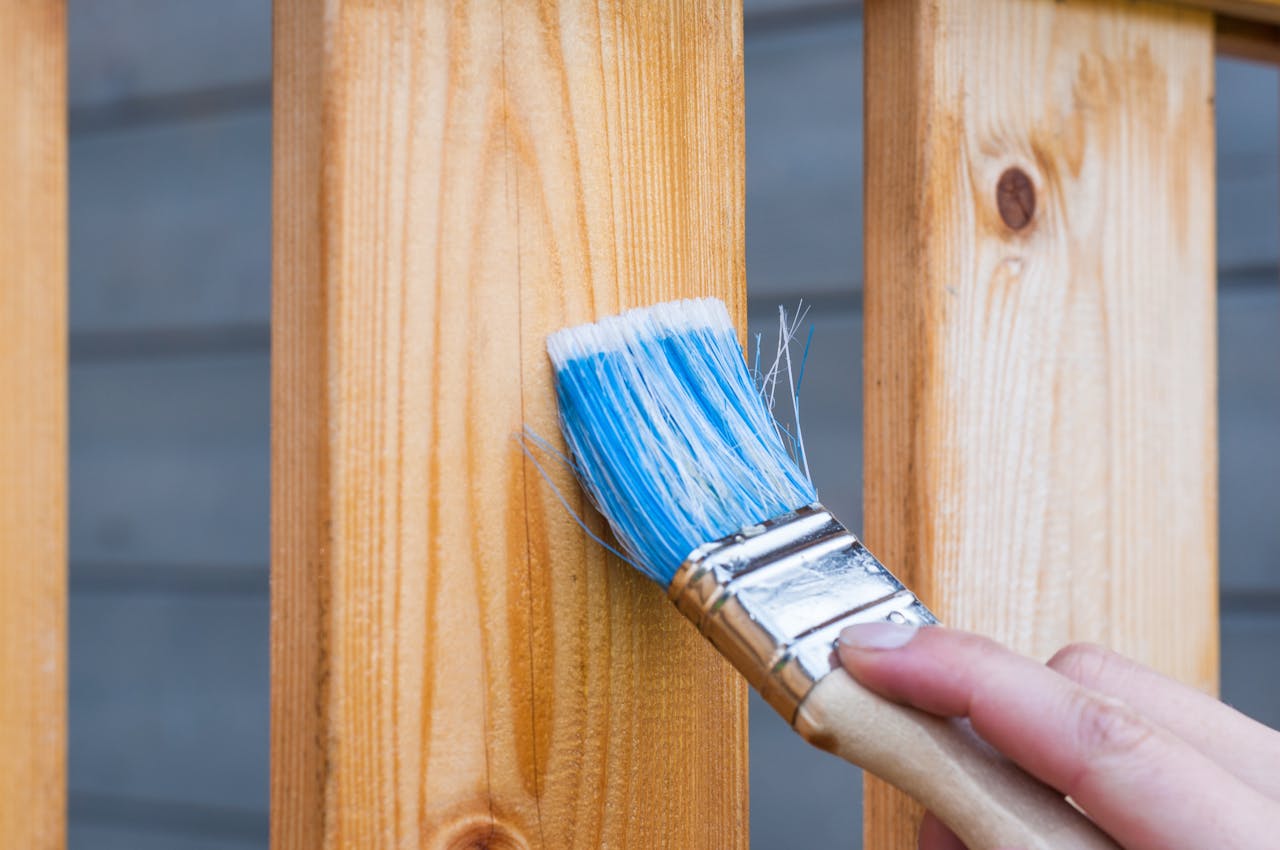A brick fence is a type of fencing made from bricks. It is usually used as a decorative feature or to enclose a space, such as a garden. Brick fences can be either freestanding or attached to a building.
Brick fences are usually made from red bricks, but they can also be made from other types of brick, such as white bricks or even black bricks. The bricks are typically laid in mortar, which helps to hold them together.
Brick fences can be either solid or have gaps between the bricks. They can also be decorated with patterns or designs.
If you are thinking about adding a brick fence to your home, there are a few things you should keep in mind. First, you will need to make sure that the brick fence is tall enough to provide the privacy or security you desire. Second, you will need to decide whether you want a solid brick fence or one with gaps between the bricks. Third, you will need to choose a brick that matches the style of your home.
Adding a brick fence to your home can be a great way to improve its appearance and increase its value. If you take the time to choose the right brick fence for your home, it can be an asset that you enjoy for many years to come.
Brick Fence Advantages
Brick fences have many advantages over other types of fencing. They are attractive and can add value to your home. Brick fences are also low maintenance and long lasting. If you live in an area with high winds, a brick fence can provide protection for your property. Brick fences can be built to any height and can be customized to fit your specific needs. You can also choose from a variety of colors and styles to match your home’s architecture. Brick fences are a great way to improve the look of your property while knowing that your property is well protected.

What Is The Cost To Build A Brick Fence?
The cost of building a brick fence will vary depending on a number of factors, including the type of bricks you use, the size and layout of your fence, and the cost of labor.
On average, you can expect to pay between $10 and $30 per square foot for a brick fence. However, if you use premium materials or hire a professional installer, your costs could be significantly higher.
To get an accurate estimate of the cost to build a brick fence for your home, it’s best to consult with a local contractor or fencing specialist. They will be able to give you a more personalized estimate based on your specific project requirements.
When budgeting for your brick fence, don’t forget to factor in the cost of ongoing maintenance. Brick fences require regular cleaning and sealing to keep them looking their best. over time, this cost can add up.
If you’re looking for a more cost-effective alternative to a brick fence, consider using another type of material such as wood or vinyl. These materials are typically much less expensive to install and maintain than brick, making them a good choice for budget-conscious homeowners.
What factors affect the cost of a brick fence?
There are several factors that can affect the cost of a brick fence. The type of brick, the size of the fence, and the location of the fence are all important considerations.
The type of brick is one of the most important factors in determining the cost of a brick fence. There are many different types of bricks available on the market, and each has its own unique price. For example, clay bricks tend to be more expensive than concrete bricks. In addition, the type of mortar used to bind the bricks together can also affect the price.
The size of the fence is another important factor to consider when estimating the cost of a brick fence. Smaller fences will generally be less expensive than larger ones. The height of the fence will also play a role in the price. Taller fences will usually be more expensive than shorter ones.
The length of the fence is yet another factor that can affect the cost of a brick fence. Longer fences will typically be more expensive than shorter ones. This is because it takes more bricks to build a longer fence. In addition, longer fences may require additional supports, which can add to the overall cost.
Finally, the location of the fence can also affect its cost. Fences located in areas with high wind speeds or near bodies of water will generally be more expensive than those built in more sheltered locations. This is because these locations are subject to higher levels of wear and tear. As a result, they will require more frequent repairs or replacement.

How To Save Money On Brick Fence Costs
Installing a brick fence can be a costly investment. However, there are ways to save money on the project. Here are a few tips:
-Get quotes from several contractors before selecting one. This will ensure that you get the best price possible.
-Don’t skimp on quality. Cheap bricks may look good initially, but they will not last as long as higher quality options. In the long run, it is better to spend more upfront and get a fence that will last.
-Be willing to negotiate with the contractor. There is usually some wiggle room in terms of price.
-Do some of the work yourself. If you are handy, you can save money by doing some of the work.
What To Look For When Hiring A Brick Fence Contractor
When you’re ready to add a brick fence to your property, it’s important to hire a professional contractor who can get the job done right. Here are a few things to look for when hiring a brick fence contractor:
1. Licensing and insurance. Make sure the contractor you hire is properly licensed and insured. This will protect you in case of any damages or accidents that occur during the construction process.
2. Experience. It’s important to hire a contractor with experience building brick fences. This way, you can be confident they’ll be able to build a high-quality fence that meets your expectations.
3. References. Ask the contractor for references from past clients. This will give you an idea of the quality of their work and whether or not they’re easy to work with.
4. A written estimate. Get a written estimate from the contractor before construction begins. This will help you budget for the project and avoid any surprises down the road.
5. A timeline. Ask the contractor for a timeline of when they expect the project to be completed. This way, you can plan accordingly and know when to expect the fence to be finished.
By following these tips, you can be confident you’re hiring a qualified brick fence contractor who can get the job done right.

Questions To Ask A Brick Fence Contractor Before Hiring Them
When it comes to choosing a brick fence contractor, there are a few key questions you’ll want to ask in order to ensure that you’re making the best decision for your home. Here are four questions to ask a potential brick fence contractor before hiring them:
1. Do they have experience working with brick fences?
You’ll want to make sure that the contractor you hire has experience working with brick fences specifically. This will ensure that they’re familiar with the materials and construction methods required for a successful installation.
2. What is their warranty policy?
Be sure to ask about the contractor’s warranty policy before hiring them. This will protect you in case of any problems that may arise during or after the installation process.
3. Do they have liability insurance?
It’s important to make sure that the contractor you hire has adequate liability insurance. This will protect you in case of any damages that may occur during the installation process.
4. What is their estimated completion date?
Be sure to ask for an estimated completion date before hiring a contractor. This will help you plan for the project and ensure that it stays on schedule.
Building A Brick Fence DIY
Building a brick fence can add both privacy and beauty to your yard. Here’s how to do it yourself:
1) First, determine the layout of your fence by using stakes and string to mark where each post will go.
One easy way to do this is by using stakes and string. Begin by placing a stake at each corner of the fence perimeter. Then, evenly space additional stakes along the perimeter, making sure they are all in a straight line. Next, use string or twine to connect each stake, creating a visual outline for your fence.
Once you have determined the layout of your fence, mark each spot where a fence post will be placed with an additional stake. This will ensure that you have an accurate and efficient plan for digging holes and installing your fence posts.
2) Next, dig holes for each post, making sure they are deep enough and firmly compacted with gravel.
The depth of the hole should be at least 1/3 to 1/2 of the overall length of the post. For example, if using a 6-foot fence post, the hole should be at least 2 feet deep. It is also important to make sure the hole is slightly wider than the width of the post itself, as this allows room for gravel to be added and compacted around the sides for additional stability.
After digging the hole, it is recommended to add several inches of gravel before placing in the fence post. This not only adds stability, but also helps with drainage to prevent the post from becoming unstable due to shifting soil or water buildup.
Before filling in the remaining hole with dirt, make sure to firmly compact the gravel and check that the fence post is straight. Once everything is secure, fill in the rest of the hole and continue on with installing the fence.
Properly digging and preparing each hole for a fence post may take extra time and effort, but it will ultimately result in a stronger and more durable fence.
3) Place the posts into the holes and cement them in place, allowing the cement to dry fully before continuing.
Once the holes for your fence posts have been dug, it’s important to properly place the posts and cement them in place. Start by placing the posts into the holes and making sure they are straight and sturdy. Use a level to check for plumb on all sides of the post. Once you are satisfied with the placement, begin filling in the holes with quick-setting concrete mix. As you fill in the holes, use a trowel or other tool to push the concrete around the base of the post, ensuring that it is fully cemented in place. Allow time for the concrete to set before continuing with your fence installation. Following these steps will ensure that your fence stays securely in place for years to come.
4) Begin laying the bricks by starting at a corner post and working your way out from there, using mortar to secure each brick in place.
Starting at a corner post is the traditional method for laying bricks and can provide added stability to your project. Begin by spreading mortar onto the corner post and placing your first brick on top, pressing it firmly into the mortar. Continue laying bricks in this manner, making sure to spread a thin layer of mortar between each brick and checking for level as you go.
When necessary, cut bricks using a masonry saw or hammer and chisel to fit around corners or in tight spaces. As you lay each row of bricks, use a spirit level to ensure they are even and make adjustments as needed.
Once all of your bricks are in place, allow the mortar to dry completely before applying any additional layers or finishing touches.
5) Once all the bricks have been laid, use mortar mix to fill in any gaps or cracks.
Are there gaps or cracks in your brick fence that need to be filled? Using mortar mix is a great solution for repairing and maintaining your brick fence.
First, you’ll want to clean the area around the crack or gap with water and a wire brush. This will remove any loose debris and ensure that the mortar adheres properly.
Next, mix the mortar according to package instructions and fill in the crack or gap using a trowel. Smooth out the surface of the mortar so it blends well with the surrounding bricks.
Allow the mortar to dry completely before touching or walking on it. Your brick fence will be good as new!
Keep in mind that regular maintenance of your brick fence, including filling any new cracks or gaps as they appear, will ensure its longevity. Don’t let small issues turn into big problems – use mortar mix to keep your brick fence in top shape.
6) Finally, add a top cap to the fence for extra stability and visual appeal.
A top cap serves as a protective barrier against weather and potential impact damage. It also adds a finished, polished look to your fence. Installing a top cap is fairly simple and can be done by purchasing premade caps or molding your own with concrete mix.
To install the top cap, start by measuring the length of your fence and cutting the caps to fit accordingly. Next, use adhesive or mortar to secure the caps onto the tops of each brick pillar. Allow time for the adhesive to dry before using or touching the fence.
Not only does adding a top cap offer extra stability and protection for your fence, but it also provides an attractive finishing touch to your outdoor space. Consider adding a top cap to your brick fence for improved function and style.

Conclusion
A brick fence provides a beautiful and classic look to any home. While the initial cost of a brick fence may be higher than other types of fences, the long-term durability and low maintenance costs make it a wise investment. When considering the cost of a brick fence, be sure to factor in installation costs and the type of bricks you select. With careful planning, you can have a stunning brick fence that adds curb appeal and value to your home.







